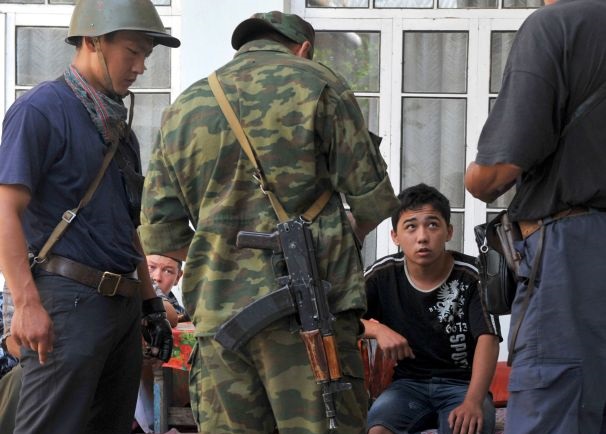News:
It started during the morning of April 22 at bazaars in the eastern Uzbek cities of Kokand and Margilan. Members of Uzbekistan’s National Security Service (SNB) in civilian clothes made their way through the crowds and forced women wearing head scarves to remove them.
The SNB were back on April 23 just to ensure everyone understood this new “hudjum” was policy, not a one-day event.
One woman said she removed her head scarf when the SNB confronted her, then put it back on after they left, only to be spotted and again asked to take it off. She finally left the Ipak Chilar Bazaar and put her head scarf back on after she was a safe distance away.
One person told Ozodlik (news agency) that the SNB had taken the head scarf from a woman who appeared to be 50 or 60 years old.
Ozodlik reports that men wearing the traditional “doppi,” the black skull cap have also fallen out of favor with the authorities. No one has commented on why this is the case, although it is possibly because the black-and-white color scheme of the doppi is somewhat reminiscent of the flag of the Islamic State militant group. Fines for those caught wearing the classic doppi go as high as 200,000 som (about $75).
(28/4/15 RFE/RL’s Uzbek Service, known locally as Ozodlik)
Comment
The aversion to the headscarf is not a new phenomena experienced by Muslims living in the regions of the ex-Soviet Union. The first “hudjum” dates back to 1927, when the Soviet government often violently forced women to stop wearing scarves, veils, or burqas. The argument of removal of the headscarf as a liberation of women has been employed since the first encounters of the West and Islam. Islamic clothing has long been seen as a sign of backwardness and the communists at the time also viewed this clothing to be against their image of going forward. After this time in 1987 there was another campaign to enforce “hadjum”.
This latest campaign by the Uzbek authorities is a further sign of the deep seeded hatred for Islam. Not only are women being targeted but even men, young and old, as any visible symbol of Islam is seen as a threat. There is a growing belief by governments in Central Asia that Islamic clothing leads to Islamic radicalization. And as such must be stopped.
In Uzbekistan a country with over 95% Muslim population, authorities are fearful indeed as the Muslims have stood the test of time and held onto their Deen despite extreme repression from the Soviets and throughout the authoritarian regime of Karimov, the enemy of Islam. In May 2005, during the Andijan Massacre, Karimov had no hesitation in ordering the killing of thousands of peaceful protestors on the streets of the city of Andijan. The jails of Uzbekistan hold the sincere dawah carriers of Hizb ut Tahrir, as documented by Human Rights Watch since the late 1990’s; here there is widespread torture, killing, rape and extension of sentences at the moment of initial sentences being served. Political opponents and journalists can just ‘disappear’. Families of the convicted are not even spared and treated with no regard or human compassion.
Despite all of this, the regime is failing to curb the love of Islam in the masses and the desire for the return of Islamic practices, be they the Islamic dress code or the desire for the implementation of the Islamic Khilafah state which will put an end to the tyrannical rule of the despotic Karimov. It is indeed a testing time at every level of society and indeed the believers will stand firm, as they have stood through far testing times and persevered.
Allah سبحانه وتعالى says:
إِنَّا لَنَنصُرُ رُسُلَنَا وَالَّذِينَ آمَنُوا فِي الْحَيَاةِ الدُّنْيَا وَيَوْمَ يَقُومُ الْأَشْهَادُ
“Indeed, We will support Our messengers and those who believe during the life of this world and on the Day when the witnesses will stand”
(Ghafir: 51)
Written for the Central Media Office of Hizb ut Tahrir by
Nazia Rehman – Pakistan

